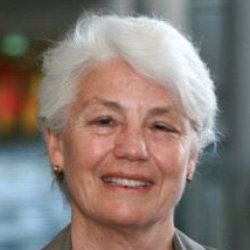Dental care must be on the election agenda - it's time
March 20, 2022
| As the federal election looms so too does a crisis in affordable access to dental care. The pandemic has served to further widen the socio-economic dental divide and there are consequences for healthcare costs, productivity and social inclusion.<!--more-->This perennial issue will only be resolved if policy makers and politicians acknowledge that oral health is afundamental contributorto the physiological, psychological and social attributes that are essential to the quality of life and to improved health outcomes.Todays Aussie smile is an instant indicator of socioeconomic status, employability and self-esteem. Its also a predictor of physical health.Teeth are important for eating and nutrition. Infected gums and missing teeth make eating difficult and lead tomalnutrition. Malnutrition, in turn, can lead to tooth loss. But teeth arealso neededto speak properly, to smile and convey a range of facial expressions.Poor dental health means discomfort and pain and an erosion of confidence and self-esteem. It can cause or exacerbate a range ofserious health problemsincluding cardiovascular disease, endocarditis, and pneumonia.Dental visits are not just for the treatment of dental caries, gum disease and broken teeth but are an essential preventive health measure. Going for a dental check-up should be part of every Australians health routine, like getting a flu shot or a cancer screening. In fact, a trip to the dentist is an important mechanism forscreening for oral cancer.But for many Australians a trip to the dentist is increasingly unaffordable. Over half of dental care is fundeddirectly from patients pockets, with much of the remainder coming from private health insurance.In2019 2020, Australians paid $5.5 billion in out-of-pocket dental costs and the average per capita expenditure on dental services was $424. Government expenditure was around $1.5 billion; the Federal Government funding is limited to a means tested program to subsidise childrens dental care and the States and Territories have increasingly limited public programs that haveimpossibly long waiting lists.Data from theAustralian Bureau of Statisticsshow that in 2018-19 more than two million Australians (17.6 percent) delayed or skipped dental care entirely due to cost. This is far higher than the proportion of people who could not afford GP (3.4 percent) or specialist care (7.7 percent). Dental care forgone is higher in more disadvantaged population groups and in rural areas. Unable to access care when needed, many Australians with acute dental problems end up inGP surgeries or hospital emergency departments.Theres a long list of reports on the consequences and costs of poor dental care. Most recently these include the Productivity CommissionsGovernment Services Report 2022, the reportfrom the Royal Commission on Aged Care Quality and Safety, andFilling the Gap reportfrom the Grattan Institute.Thecoronavirus pandemic has had a major impact on the ability (and willingness) of people to access dental services and on dental training and research.Dentists now are reporting more emergencies and poorer health outcomes for their patients.There are two key reasons why governments of any political persuasion have been unwilling to tackle the need for better dental care: firstly, the cultural divide that has consistently failed to see dental care as an essential part of medical care; and secondly - critically - the huge up-front costs of providing a Denticare system comparable to Medicare. The Grattan Institute calculates a Denticare scheme would cost an extra$5.6 billion a year.While these costs are substantial, there is a consistent failure to recognise the economic benefits that a federal government investment in a universal dental care program would deliver in terms of reduced healthcare costs and increased productivity.In the face of unwillingness to implement a universal dental care program, there is also reluctance on the part of proponents to consider a more targeted approach (for example a preventive program for children, oral hygiene programs for people in aged care, Medicare coverage of dental care for pregnant and post-partum women and for people with certain chronic medical conditions like cancer diabetes and HIV/AIDs) or a more limited approach such as the provision of designated essential services under a means-tested program.That reluctance is likely rooted in concerns about rationing - or at least the appearance of rationing - and the hard work that is involved in developing such circumscribed approaches. But if the giant step to a universal Denticare program is a step too far, then smaller steps to begin to fill the gap make a good start on improving the unsustainable status quo.Polling shows thathousehold costs and healthcarewill be key issues for voters in the upcoming federal election. There is also a push to address thesocio-economic gapsthat the pandemic has so harshly highlighted. Its time to put affordable dental care for all Australians on the list of election commitments.See also: In 1974, the Whitlam Government decided to exclude dental care from Medicare for two reasons. |

